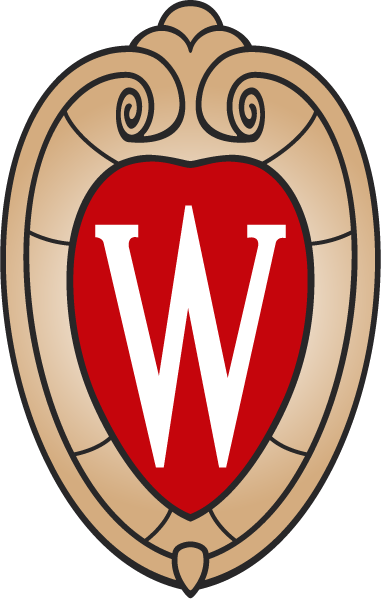
Introduction to Electromagnetic Interference and Compatibility (EMI/EMC) and Best Practices
interpro.wisc.edu/RA01371 See upcoming datesCourse Overview
Learn about Electromagnetic Interference (EMI) and Electromagnetic Compatibility (EMC), including best practices and a building-block approach with application-specific examples.
Who Should Attend?
- Electrical engineers
- Mechanical design engineers
- System engineers
- Project engineers
- System integrators
- Program managers
- Technical leaders
Course Outline
Introduction – Examples of EMI/EMC Considerations
- Power electronic circuits (inverters and DC/DC converters)
- Hybrid electric vehicles and plug-in electric vehicles
- Appliances and computers
EMI/EMC Background
- Emissions and susceptibility
- Important electromagnetic laws
EMI Specifications and Standards
- Emission regulations (DO 160, FCC, CISPR)
- Susceptibility regulations (DO 160, IEC)
Path of Lowest Impedance
- Examples of high frequency current flow
- Review of current paths
Noise Coupling Mechanisms
- Four types of noise coupling
Common Impedance Coupling
- Circuits sharing electrical connections
Magnetic Coupling
- Meaning of Faraday’s Law
- Understanding magnetic fields
- Equivalent circuit of magnetic coupling
Electric Field Coupling
- Electric and magnetic field comparison
- Equivalent circuit for electric field coupling
System and Board Layout Issues
- Power bus decoupling
- Return (ground) planes
- Board layout priorities and board level concerns
- Common susceptibility problems
Electromagnetic Coupling (Radiation)
- Characteristics of radiation
- Dipole antenna characteristics
- Characteristics of unintentional radiators
Shielding
- H-field shielding and skin depth
- Electric field shielding
Bonding
- Seam bonding and faying surfaces
- Bonding methods
Grounding
- Signal grounds
- Single and multiple point grounds, hybrid grounds
- Signal reference subsystem
- Equipment and facility grounding
Lightning
- Specification
- Test methods
- Indirect and direct effects
Filtering
- Models
- Common mode filtering, differential mode filtering
- Low-pass, high-pass, band-pass filtering
- Signal filter design techniques
- Filter damping
Shielding Practical Considerations
- Cabinet and enclosure design
- Cables and connectors
- EMI gaskets
- Slots and seams
Antennas for EMC
- Antennas for emissions and for susceptibility
- Monopole and biconical antennas for EMI tests
Best Practices to Pass EMI Tests
- Design practices for passing EMI qualification tests
- Conducted and radiated emissions and susceptibility
System Issues Excited by AC Drive CM and DM voltages
- Motor over-voltages
- Bearing damage
Instructors
Michael Schutten
Michael Schutten is presently self-employed as an EMC consultant, specializing in using novel technologies to ensure EMI compliance for power converters and inverters, ranging from low power up to several megawatts. He has developed many innovative technologies to diagnose, locate, and resolve EMI problems.
He was previously a Principal Engineer at the General Electric Global Research Center in Niskayuna, New York. While there he developed advanced EMC technologies that enabled compact, EMI compliant power electronic systems. He has developed robust and ultra-low noise power converters for military, industrial, and consumer applications.
His areas of expertise include electromagnetic compatibility, power electronics, RF electronics, nonlinear control theory, and analog electronics. He has taught multiple short courses at universities, government laboratories, and at twelve IEEE EMC and power electronics conferences. Mike has 35 issued patents and multiple journal and conference papers.
John Stanford
John Stanford, MSEE is an EMC consultant for Tork Technologies. John earned his MSEE degree from University of Illinois, Urbana–Champaign and his BEE degree from University of Dayton. John is a iNARTE Certified Design Engineer and has 32 years experience ranging from product design to system level EMC. John has also designed high-level lightning simulators. His background is military and commercial aerospace EMC and is knowledgeable with MIL-STD-461, 464 and RTCA DO160 standards.
Bulent Sarlioglu
Bulent Sarlioglu is a Professor at the University of Wisconsin-Madison and the Technology and Collaboration Director of WEMPEC of the Wisconsin Electric Machines and Power Electronics Consortium. From 2000 to 2011, he was with Honeywell International Inc.'s Aerospace Division, Torrance, CA, USA, most recently as a Staff Systems Engineer. His expertise includes electrical machines, drives, and power electronics, particularly in electrifying transportation and industrial applications. He is the inventor or co-inventor of 22 U.S. patents and many international patents. In addition, he has more than 300 technical papers that are published in conference proceedings and journals. Dr. Sarlioglu received Honeywell's Outstanding Engineer Award in 2011 for his outstanding contribution to aerospace, the NSF CAREER Award in 2016, and the 4th Grand Nagamori Award from Nagamori Foundation, Japan, in 2018. Dr. Sarlioglu received the IEEE PES Cyril Veniott Award in 2021. Dr. Sarlioglu became a fellow of the National Academy of Inventors in 2021 and an IEEE Fellow in 2022.
Upcoming dates (0)
Take this course when it’s offered next!
